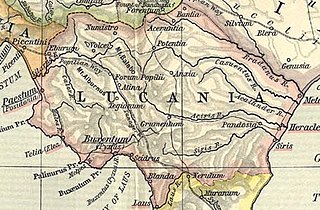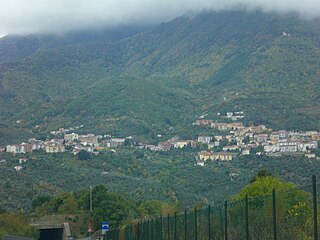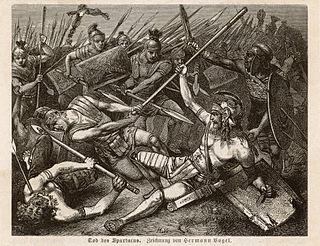
Lucania was a historical region of Southern Italy. It was the land of the Lucani, an Oscan people. It extended from the Tyrrhenian Sea to the Gulf of Taranto.

The Province of Avellino is a province in the Campania region of Southern Italy. The area is characterized by numerous small towns and villages scattered across the province; only two towns have a population over 20,000: its capital city Avellino and Ariano Irpino.

Accettura is a town and comune in the province of Matera, in the Southern Italian region of Basilicata. It is bounded by the comuni of Calciano, Campomaggiore, Cirigliano, Oliveto Lucano, Pietrapertosa, San Mauro Forte and Stigliano.

Altavilla Silentina is a town and comune located in the province of Salerno, Campania, some 100 km south of Naples, Italy.

Campagna is a small town and comune of the province of Salerno, in the Campania region of Southern Italy. Its population is 17,148. Its old latin name was Civitas Campaniae. Campagna is located in one of the Picentini Mountains valleys at an altitude of 270 meters above sea level.

The Ofanto, known in ancient times as Aufidus or Canna, is a 170-kilometre (110 mi) river in southern Italy that flows through the regions of Campania, Basilicata, and Apulia, into the Gulf of Manfredonia near Barletta.

The Sele is a river in southwestern Italy. Originating from the Monti Picentini in Caposele, it flows through the region of Campania, in the provinces of Salerno and Avellino. Its mouth is in the Gulf of Salerno, on the Tyrrhenian Sea, at the borders between the municipalities of Eboli and Capaccio, in the beginning point of Cilentan Coast.

Savignano Irpino is a village and comune in the province of Avellino, in the Campania region of southern Italy.

Eboli is a town and comune of Campania, southern Italy, in the province of Salerno.
The Hirpini were an ancient Samnite tribe of Southern Italy. While generally regarded as having been Samnites, sometimes they are treated as a distinct and independent nation. They inhabited the southern portion of Samnium, in the more extensive sense of that name, roughly the area now known as Irpinia from their name—a mountainous region bordering on Basilicata towards the south, on Apulia to the east, and on Campania towards the west. No marked natural boundary separated them from these neighboring nations, but they occupied the lofty masses and groups of the central Apennines, while the plains on each side, and the lower ranges that bounded them, belonged to their more fortunate neighbors. The mountain basin formed by the three tributaries of the Vulturnus —the Tamarus, Calor, and Sabatus, which, with their valleys, unite near Beneventum, surrounded on all sides by lofty and rugged ranges of mountains—is the center and heart of their territory. Its more southern portion comprised the upper valley of the Aufidus and the lofty group of mountains where that river takes its rise.

Acerno, is a town and comune in the province of Salerno in the region of Campania in south-western Italy.

Calabritto is an Italian town and a commune in the province of Avellino, Campania, Italy. It occupies a hilly-mountainous area at the eastern tip of the Monti Picentini range.

Calitri is a town and comune in the province of Avellino, Campania, Italy.

Lioni is a town and comune in the province of Avellino, Campania, southern Italy.

Battipaglia is a town and a comune in the province of Salerno, in the Campania region of south-western Italy.

Oliveto Citra is a town and comune in the province of Salerno in the Campania region of south-western Italy. It is located 55 kilometres (34 mi) by road northeast of Salerno. As of 2016, the comune had 3,802 inhabitants and covered an area of 31.62 square kilometres (12.21 sq mi).

Valva is an Italian town and municipality in the Province of Salerno in the south-western region of Campania.

Anzano di Puglia is a small town and comune in the province of Foggia and region of Apulia in southeast Italy. It rises 760 metres (2,490 ft) above sea level.

Irpinia is a district of the Apennine Mountains around Avellino, a town in Campania, South Italy, about 50 km east of Naples. It was the territory of the ancient Hirpini tribe; its extent matches approximately today's province of Avellino.

Spartacus was a Thracian gladiator who, along with Crixus, Gannicus, Castus, and Oenomaus, was one of the escaped slave leaders in the Third Servile War, a major slave uprising against the Roman Republic. Little is known about him beyond the events of the war, and surviving historical accounts are sometimes contradictory and may not always be reliable. However, all sources agree that he was a former gladiator and an accomplished military leader.





















